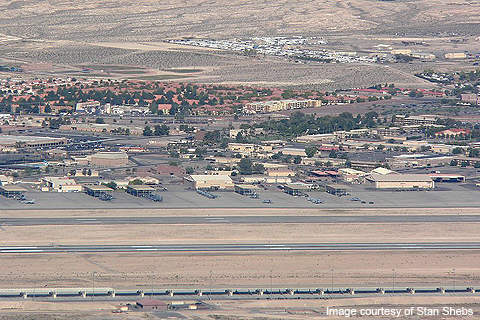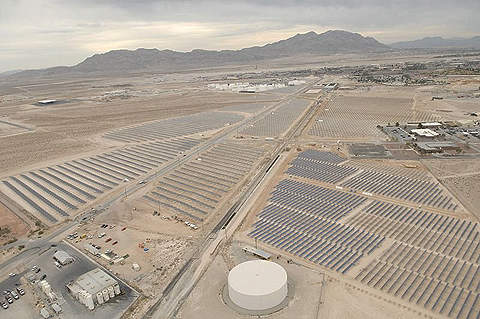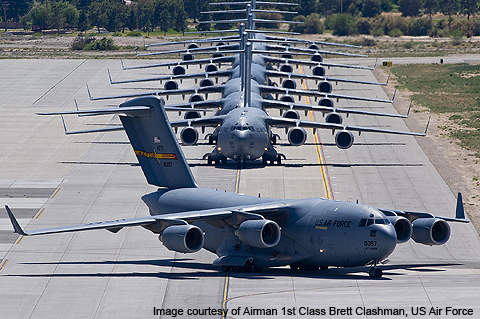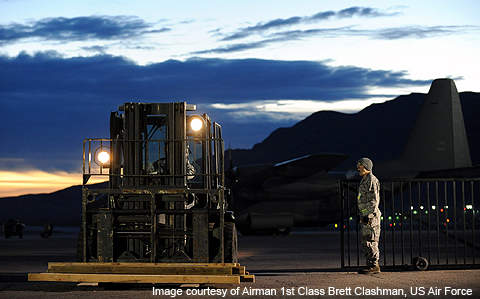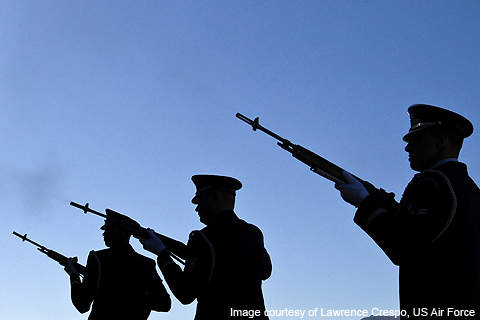Nellis Air Force Base (NAFB) is situated 13km north-east of the central business district of Las Vegas in Nevada, US. It is one of the largest fighter air force bases in the world. Built on a 14,000-acre site, about 60% of the land is undeveloped and the remaining 40% contains structures.
Built in 1941, the base was named after the World War II Lieutenant William Harrell Nellis, a P-47 pilot who died in the Battle of the Bulge.
NAFB provides modern combat training to military personnel in the US Air Force (USAF), Army, Navy, Marine Corps and allied forces. The base also performs operational test and evaluation missions and supports combat search and rescue, and piloted aircraft operations throughout the world.
The base accommodates 12,000 military and civilian personnel, and features a 4,800-square-mile test and training range.
The first of four F-16 mission training centre (MTC) simulators was installed at the NAFB on 17 June 2011 under a $109.1m contract with L-3 Link Simulation and Training. The MTC comprises four high definition simulators. Each simulator consists of an F-16 Fighting Falcon fighter cockpit.
The remaining three will be delivered by October 2011. An MTC simulator for F-15E Strike Eagle and F-35 Lightning II aircraft will be installed at the base in future.
Nellis Air Force Base history
In October 1940, US Army Air Corps Major David Schlatter began looking for a location for his aerial gunnery school. The Utah, Arizona and Nevada regions were considered and Las Vegas in Nevada was selected as the most suitable due to its clear weather. Development of the Las Vegas Army Air Field began in March 1941 with the intention to graduate the trainers to the highest degree of proficiency for combat operations.
World War II made the base construction particularly urgent. About 9,117 gunners were trained by end of 1942. The training was performed using B-17 gunners but later migrated to the B-29 Superfortress. 55,000 gunners had graduated by the end of World War II, of which 45,000 were B-17 gunners and 3,000 B-29 gunners. The school closed in September 1945.
The USAF reopened the gunnery school in March 1948 to train pilots for the Korean War. The school was initially renamed Las Vegas Air Force Base and was redesignated Nellis Air Force base in April 1950. P-51 Mustangs, F-80s and F-86 Sabres were used for training the pilots.
The F-22A Raptor was rolled out and delivered to the base in January 2003 for the F-22 force development evaluation programme and weapons school as the climate is similar to that in Iraq and Afghanistan. 12 Raptors were assigned to the 422nd Test and Evaluation Squadron till July 2008 for various development and evaluation operations.
Solar panel power generation system
A 72,000-solar-panel power generation system was installed in 2007 as part of the base development. The 14MW system is installed on a 140-acre site.
The power system is equipped with state-of-the-art sun tracking system. Each set of solar panels in the sun tracking system is slanted toward the south and rotates around a central bar to track the sun while moving from east to west.
The system is expected to produce 30 million kilowatt hours of electricity each year and meet 25% of the power requirements of the base.
Garrison facilities
The base serves as the headquarters for the USAF warfare centre, 57th Wing, 98th Range Wing, and 99th Air Base Wing. It also houses 53rd Test and Evaluation Group, 505th Operations Group, 926th Group, 820th RED HORSE Squadron, 58th Rescue Squadron and 896th Munitions Squadron.
NAFB comprises three main functional sectors: Area I, Area II, and Area III. Area I is principally used for airfield and mission support functions. It is located east of Las Vegas Boulevard. Area II is a munitions area, situated to the east of Area I. 820th RED HORSE Squadron and 896th Munitions Squadron are based in this area. About 75% of the missiles or munitions used during the training are dropped on Area II.
Area III is located in the west of the main base. It comprises the Mike O’Callaghan Federal Hospital, households for families, and administration and industrial areas.
Air facilities
The Nellis air traffic control facility (NATCF) controls 450,000 aircraft movements a year.
The base can accommodate 300 military and civilian aircraft including A-10s, F-15Cs, F-15Es, F-22As, F-16, RQ-1A and MQ-1 Predators, and HH-60G helicopters. There are two runways, 3,085m and 3,065m respectively, that are concrete surfaced.
Other NAFB facilities
Amenities available at the Nellis Air Force Base include accommodation, recreation, training, shopping, single and family housing, education, industrial and administration facilities, and temporary lodgings. The base also has medical care and child care facilities.
The US Defence Sector: Market Opportunity & Entry Strategy, Analyses and Forecasts to 2015
This project forms part of our recent analysis and forecasts of the US defence sector available from our business information platform Strategic Defence Intelligence. For more information click here or contact us: EMEA: +44 20 7936 6783; Americas: +1 415 439 4914; Asia Pacific: +61 2 9947 9709 or via email.

